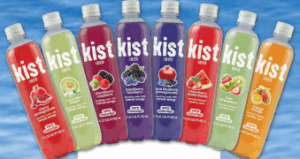The US Court of Appeals for the Eighth Circuit affirmed a district court judgment, finding that the plaintiff failed to sufficiently prove damages for its copyright claim, the jury instructions accurately applied the sophisticated consumer exception to initial-interest confusion, and the district court properly submitted ambiguous contract language to the jury for interpretation. Hoffmann Brothers Heating and Air Conditioning, Inc. v. Hoffmann Air Conditioning & Heating LLC, Case No. 24-1289 (8th Cir. Sept. 8, 2025) (Graza, Stras, Kobes, JJ.)
Brothers Tom and Robert Hoffmann were partners in Hoffmann Brothers. After Robert bought out Tom, they entered into a settlement agreement that included a four-year restriction barring Tom from using the name “Hoffmann” in connection with an HVAC business. After four years, Tom began using “Hoffmann Air Conditioning & Heating, LLC” (Hoffmann AC). Hoffmann AC’s advertising agency later mistakenly used pictures of Hoffmann Brothers. Hoffmann Brothers sued for trademark and copyright infringement. Hoffmann AC prevailed on some issues at summary judgment, and the jury reached a mixed verdict on the remaining claims. Both parties were denied attorneys’ fees, and Hoffmann Brothers appealed.
On appeal, the Eighth Circuit affirmed that Hoffmann Brothers did not sufficiently prove damages for its copyright claim based on Hoffmann AC’s use of its photographs. Because the photographs were unregistered works, Hoffmann Brothers was required to prove actual damages and/or additional profits of the infringer attributable to the infringement. Hoffmann Brothers’ only evidence of actual damages was Hoffmann AC’s monthly fee paid to its marketing agency. The Court found that using the monthly fee was too speculative because it did not reflect the benefit to Hoffmann AC or the harm to Hoffmann Brothers. For evidence of additional profits, Hoffmann Brothers’ expert report failed to link the use of the photographs to Hoffmann AC’s gross revenue. The Court explained that the Hoffmann Brothers could have linked additional profits attributable to the use of the photographs by, for example, demonstrating that:
- Hoffmann AC gained customers because of the ads.
- The photographs actually influenced purchasing decisions.
- There was spike in monthly revenue that coincided with use of the photographs.
Regarding Hoffmann Brothers’ trademark claim, the jury found that the names were not so similar as to cause confusion. Hoffmann Brothers appealed, arguing that the district court erred in its jury instructions. The Eighth Circuit rejected the argument, finding the instructions fair and legally adequate. The instruction was directed to the issue of initial-interest confusion (a concept not adopted by Missouri courts), which occurs when consumer confusion arises at the outset, even if no sale ultimately results. The Court explained that under Eighth Circuit precedent, a sophisticated consumer exception applies to this theory, meaning that consumers who exercise a high degree of care are less likely to be initially confused. Here, the district court instructed the jury to consider initial-interest confusion only if it found that Hoffmann Brothers’ customers were not sophisticated. While the Eighth Circuit acknowledged some hesitation about the assumption that sophisticated consumers are never susceptible to initial-interest [...]
Continue Reading
read more


 Subscribe
Subscribe




